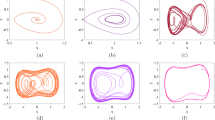Abstract
Inductively coupled channels are based on the electromagnetic induction principle and realize long-distance current signal transmission through seawater. Due to a few difficulties in performing actual experiments, it is unclear how the seawater medium affects the frequency selectivity of the current signal. In this paper, a dual dipole model of the inductively coupled seawater transmission channel is established for the traditional short-distance current field transmission mode. The transmission characteristics of electrical signals in seawater are theoretically derived. A platform is used to measure the amplitude-frequency and phase-frequency characteristics of the current signal transmission in seawater with transmission frequencies ranging from 30 kHz to 1 MHz, and transmission distances in the vertical range of 4 m. The COMSOL Multiphysics simulation and practical test analysis are carried out to analyze the frequency selectivity of seawater conductivity. It is proved that the seawater resistance increases as the frequency increases, which is the key problem that affects the current signal. This study provides an important theoretical support and experimental evidence for improving the transmission performance of long-distance underwater current signals.
Similar content being viewed by others
References
Boyle, G.R., Robertson, W.C. and Johnigan, R.A., 2014. Wireless Data Transmission via Inductive Coupling Using Di/Dt As the Magnetic Modulation Scheme and Hysteresis, US Patent 9294151.
Che, X.H., Wells, I., Dickers, G., Kear, P. and Gong, X.C., 2010. Reevaluation of RF electromagnetic communication in underwater sensor networks, IEEE Communications Magazine, 48(12), 143–151.
Cox, R.A., Culkin, F., Greenhalgh, R. and Riley, J.P., 1962. Chlorinity, conductivity and density of sea-water, Nature, 193(4815), 518–520.
Deng, Y. and Wang, X., 2008. Technology of inductive coupling data transmission and application in a new seawater temperature-salinity-depth sensor chain, Meteorological, Hydrological and Marine Instruments, (3), 1–4. (in Chinese)
Han, X.Y., Peng, Y.F. and Ma, Z.J., 2016. The electric conductivity characteristics of seawater ionic solution under the influence of magnetic field, International Journal of Modern Physics B, 30(24), 1650172.
Hanson, F. and Radic, S., 2008. High bandwidth underwater optical communication, Applied Optics, 47(2), 277–283.
Hou, Z.Y., Chen, Z., Wang, J.Q., Zheng, X.F., Yan, W., Tian, Y.H. and Luo, Y., 2018. Acoustic characteristics of seafloor sediments in the abyssal areas of the South China Sea, Ocean Engineering, 156, 93–100.
Huang, Y.G., Fang, C. and Li, X.F., 2013. Contactless power and data transmission for underwater sensor nodes, EURASIP Journal on Wireless Communications and Networking, 2013, 81.
Joe, J. and Toh, S.H., 2007. Digital underwater communication using electric current method, Oceans 2007-Europe, IEEE, Aberdeen, UK, pp. 1141–1144.
Johnson, K.S., Childress, J.J. and Beehler, C.L., 1998. Short-term temperature variability in the rose garden hydrothermal vent field: An unstable deep-sea environment, Deep Sea Research Part A. Oceanographic Research Papers, 35(10–11), 1711–1721.
Kaushal, H. and Kaddoum, G., 2016. Underwater optical wireless communication, IEEE Access, 4, 1518–1547.
Kim, C.W., Lee, E. and Syed, N.A.A., 2010. Channel characterization for underwater electric conduction communications systems, Oceans 2010 MTS/IEEE Seattle, IEEE, Seattle, WA, USA.
Kojiya, T., Sato, F., Matsuki, H. and Sato, T., 2005. Construction of non-contacting power feeding system to underwater vehicle utilizing electro magnetic induction, Europe Oceans 2005, IEEE, Brest, France, pp. 709–712.
Li, J.H., White, P.R., Bull, J.M. and Leighton, T.G., 2019. A noise impact assessment model for passive acoustic measurements of seabed gas fluxes, Ocean Engineering, 183, 294–304.
Lloret, J., Sendra, S., Ardid, M. and Rodrigues, J.J.P.C., 2012. Underwater wireless sensor communications in the 2.4 GHz ISM frequency band, Sensors, 12(4), 4237–4264.
Momma, H. and Tsuchiya, T., 1976. Underwater communication by electric current, OCEANS’76, IEEE, Washington, DC, USA, pp. 631–636.
Sellschopp, J., 1997. A towed CTD chain for two-dimensional high resolution hydrography, Deep Sea Research Part I: Oceanographic Research Papers, 44(1), 147–165.
Soar, R.J., 2016. Inductively Coupled Power and Data Transmission System, US Patent 9293927.
Wang, W., Zhao, J.W., Xiong, W., Cao, F.Y. and Xie, G.M., 2015. Underwater electric current communication of robotic fish: Design and experimental results, 2015 IEEE International Conference on Robotics and Automation, IEEE, Seattle, WA, USA, pp. 1166–1171.
Wu, S., Zhang, W.X., Li, Z.H., Deng, Y., Liang, J.J., Li, F.C. and Lan, H., 2016. Study on the contactless data transmission for ocean underwater vertical sensor structure, Journal of Marine Engineering & Technology, 15(3), 107–114.
Yan, H.S., Wei, D.X., Wang, X.B., Chen, Y.X. and Meng, X.W., 2019. Research of structural health monitoring system for stinger of large deep water pipe-laying ship, Ocean Engineering, 171, 361–376.
Zheng, Y., Wang, X.R., Zhang, X.W., Li, H.Z. and Jin, X.Y., 2018. Improving transmission reliability of inductive coupling temperature-salinity-depth mooring cable system, Ocean Engineering, 147, 488–495.
Zheng, Y., Guo, X.X., Li, H.Z., Wang, X.R. and Zhang, X.Y., 2019. Design of algorithm for multicarrier modulation to improve transmission performance of inductive coupling temperature-salinity-depth chain, IEEE Communications Letters, 23, 995–998.
Author information
Authors and Affiliations
Corresponding author
Rights and permissions
About this article
Cite this article
Zheng, Y., Fei, C., Lu, Yf. et al. Frequency Selectivity Analysis Based on Inductively Coupled Channel for Current Transmission Through Seawater. China Ocean Eng 35, 622–630 (2021). https://doi.org/10.1007/s13344-021-0056-6
Received:
Revised:
Accepted:
Published:
Issue Date:
DOI: https://doi.org/10.1007/s13344-021-0056-6




